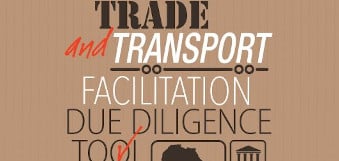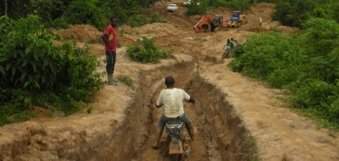You are here
Integrate Africa


Regional Market
- Building regional infrastructure
- Boosting intra-African trade & investment
- Facilitating movement of people across borders
Africa’s regional integration challenges are well known. Intra-African trade is the lowest globally – approximately 15 percent compared to 54 percent in the North America Free Trade Area, 70 percent within the European Union and 60 percent in Asia. The continent’s difficult physical landscape makes connection between communities, countries, and even entire regions challenging.
There is also very limited integration of regional markets for infrastructure services, particularly in power, energy, water and sanitation. This is further complicated by weak regional economic communities (RECs) that lack capacity and are poorly structured to make or even attract necessary regional investments. This is especially significant for fragile countries, as they stand the most to gain from greater integration. Many of their governments have also not worked enough with the private sector and others to develop and upgrade regional infrastructure; improve policies for industries that fit the productive capabilities of countries in Africa (for example, in agriculture and food security); and fully implement protocols of the RECs that governments have signed.
In line with the TYS, the Bank’s Group Regional Integration Policy and Strategy, approved by the Board in 2014, acknowledges the opportunities provided by regional integration in boosting infrastructure, trade, industrialization and the movement of people. As part of its mandate, the Bank Group continues to lead in several continental wide initiatives targeting both “hard” and “soft” infrastructure (e.g. trade and services facilitation policies and instruments). These initiatives are, among others: i) the Continental Free Trade Area, ii) CAADP, iii) PIDA, and iv) the Boosting Intra-African Trade agenda.
Regional integration is critical for expanding the size of our markets. We must integrate Africa – grow together, and develop together. Our collective destiny is tied to breaking down the barriers separating us.
- AfDB President, Akinwumi Adesina
The Integrate Africa priority will be mainstreamed across the other High 5s and the Bank will fast-track the regional integration continental agenda for which several of the agreed programs are already in place. The Bank will scale up its investments in infrastructure development, as expressed in the PIDA program, for example through the development of regional power markets and brokering and coordinating regional infrastructure projects. The Bank will work with other stakeholders to assist in strengthening RECs and national authorities to encourage and support regional ‘soft’ infrastructure sector integration, cross-border investments, elimination of non-tariff trade barriers, the harmonization of investment and engineering codes, and quality assurance and certification standards.
The Bank will also work to deepen Africa’s financial system including operations to promote robust market-based monetary systems. The Bank will continue to promote initiatives to improve Africa’s financial infrastructure including collateral registries, credit bureaus, credit ratings, and payment and settlement systems, all of which are necessary to foster financial stability and the successful operation of modern integrated financial markets. Helping countries lift market access barriers, formalizing women’s participation in cross-border trade and other regional initiatives, and scaling up intra-African trade, supporting regional agricultural value chains, and promoting the movement of people through changes in the visa regime will all contribute towards increased productivity and economic activity.










